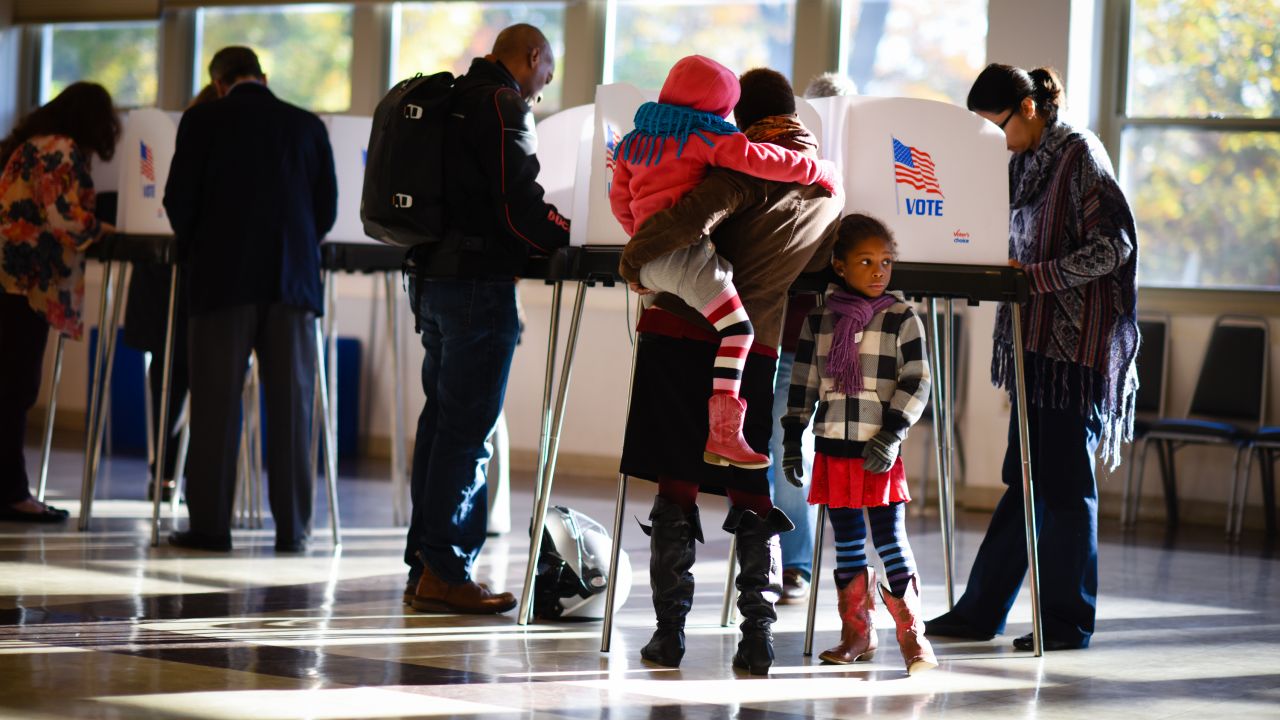
Residents of Montgomery County, Maryland cast their vote at Temple Emanuel in Kensington, Maryland on Tuesday November 8, 2016. (Sarah L. Voisin/The Washington Post via Getty Images)
Margie and Alvin Mueller of Plymouth, Wisconsin, have been married for 64 years and have lived at the same house and voted at the same location since then. But when the Muellers went to vote early this election, they were told that Margie’s expired driver’s license was not an acceptable form of voter ID. The poll workers told her to go to the DMV in Sheboygan, 25 minutes away, to get a new ID.
But Margie was in between radiation treatments for cancer and wasn’t up for the trip. Her husband Alvin was so mad, he decided not to vote either, in solidarity with his wife. They were both Democrats who were planning to vote for Hillary Clinton. “The damn Republicans,” Alvin said, “don’t want Latinos and old people to vote.”
Donald Trump won Wisconsin by just 27,000 votes, but 300,000 registered voters lacked strict forms of ID to vote, according to a federal court. The state’s voter-ID law depressed turnout, particularly among black voters. Turnout was at its lowest level in Wisconsin in 20 years and down nearly 15 percent in Milwaukee, where 70 percent of the state’s black residents live. “We saw some of the greatest declines were in the districts we projected would have the most trouble with voter ID requirements,” said Neil Albrecht, executive director of Milwaukee’s Election Commission.
Wisconsin was one of 14 states with new voting restrictions in effect for the first time in 2016, which was the first presidential election in 50 years without the full protections of the Voting Rights Act. In other states, like North Carolina, black turnout plunged because early voting hours were cut by Republicans and the number of polling places reduced.
With Republicans now in control of the presidency, Congress and two-thirds of state legislative chambers, attacks on voting rights are going to get worse. What can we do about it?
The first thing that those who care about democracy must do is resist. We must challenge the judges Trump appoints to the courts, the people he picks to run agencies like the Justice Department and the bad laws that will be passed by Republicans in Congress and the states.
Second, we need an affirmative agenda to make it easier to vote. In Oregon, 250,000 new voters were added to the rolls this year through the state’s new automatic registration system and 76 percent of registered voters cast a ballot. That should be a model for the rest of the country.
The real headline of this election was that 42 percent of eligible voters decided not to participate — either because they couldn’t or didn’t want to. The cure for this is more democracy, not less.




